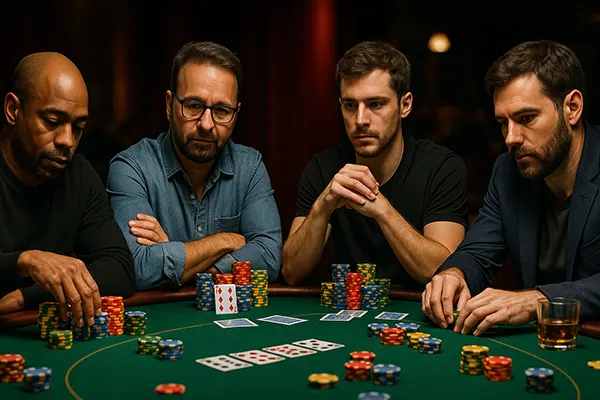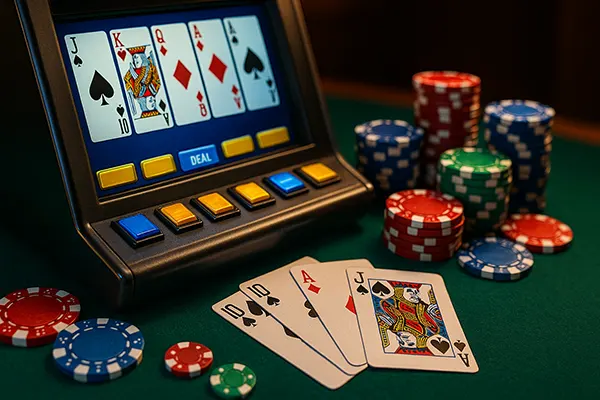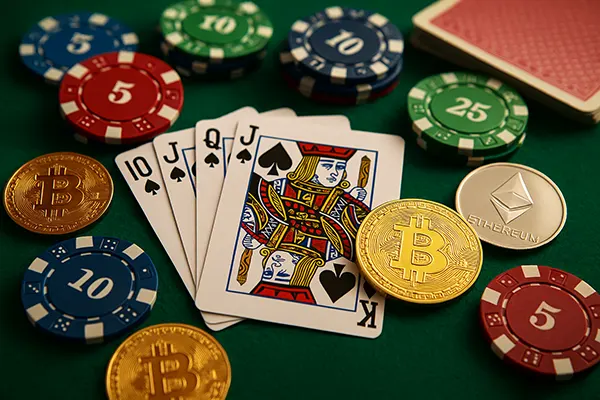Rare Poker Hands Analysed Through the Play of Ivey, Negreanu, Chidwick and Mateos

Rare hands played by the most respected ambassadors of modern poker offer a detailed look at how elite decision-making works in situations that seldom occur at standard tables. Phil Ivey, Daniel Negreanu, Stephen Chidwick and Adrian Mateos have all been involved in hands that demonstrate exceptional strategic depth, from unorthodox bluffs to mathematically precise hero calls. This article examines several such moments, focusing on their reasoning, timing and table dynamics as observed across high-stakes events up to 2025.
Phil Ivey and the Precision of High-Pressure Decision-Making
Phil Ivey has long been known for the ability to decode subtle betting patterns, and one of his rarest hand situations involved turning a marginal holding into a decisive move against aggressive opposition. In a televised high-stakes cash game, he faced a triple-barrel line on a paired board where conventional play recommended folding. Instead, Ivey dissected the range imbalance created by his opponent’s sizing and called with third pair, a decision that stunned spectators yet aligned perfectly with the distribution of bluffs he had identified.
Another notable moment occurred during a Triton event, where Ivey executed a check-raise bluff using a low-frequency blocker combination. The hand was remarkable due to the precise timing: he selected a holding that reduced the chances of his opponent continuing with key value hands. This was not improvisation but a calculated structural choice built on hours of pattern recognition at the table.
A third instance features Ivey facing a cold four-bet pre-flop holding a suited gapper that most players would discard. He re-evaluated the dynamics of position, stack depth and opponent tendencies, concluding that the configuration allowed profitable aggression. Post-flop play rewarded his judgment as the suited gapper connected sufficiently to follow through, emphasising how rare hands can become profitable through deep strategic understanding.
What Makes Ivey’s Approach to Rare Spots Unique
Ivey’s response to unusual situations rests on three pillars: instinct refined through experience, attention to minute behavioural shifts, and a willingness to break from conventional charts when the context calls for it. He consistently converts theoretically marginal decisions into high-value lines by trusting his internalised database of past encounters.
Another defining element is his focus on opponents rather than isolated cards. He reads the structure of the action, not just the board texture, and identifies where line inconsistencies occur. This makes his rare-hand decisions a product of behavioural interpretation rather than speculative risk-taking.
Finally, Ivey’s uncommon plays remain grounded in mathematics. Even his most daring calls or raises stem from a logic rooted in blocker effects, equity realisation and pot odds. His ability to align these factors under pressure explains why his rarest hands continue to attract analysis years after they take place.
Daniel Negreanu’s Complex Hand Reading and Range Manipulation
Daniel Negreanu’s rarest hands typically show his exceptional ability to narrow down an opponent’s possible holdings to an extremely tight cluster. A celebrated example occurred in a high-stakes televised tournament where he correctly named two exact combinations his opponent might have before making a thin value bet with second pair. This was not a display of theatrics but a practical application of structured deduction.
Negreanu’s skill also appears in rare spots where he floats out of position with minimal equity. In one memorable moment, he called a sizeable turn bet with a gutshot and no blockers to the opponent’s strongest value range. His reasoning relied on the belief that the bettor’s line was fragmented and heavily weighted towards missed continuations rather than real strength. The river card validated his interpretation, enabling him to bluff successfully.
Another distinctive hand features Negreanu folding top pair top kicker in a pressure-filled situation at a major international event. The fold, uncommon for many professionals, came after he assessed physical cues and pacing inconsistencies that contradicted the betting narrative. He trusted his assessment and later learned it was correct, reinforcing the importance of integrating live-reading skills into rare-hand decisions.
The Foundations Behind Negreanu’s Rare-Hand Decisions
Negreanu’s strategic identity is built around relational awareness: his judgment improves with each interaction as he gathers new behavioural data. Rare hands often highlight these accumulated insights, turning marginal calls and folds into exemplary decisions.
His ability to verbalise his thought process, seen in numerous broadcasts, helps illuminate how he separates intuitive impressions from measurable information. This transparent approach provides valuable learning material for players seeking to understand high-level reasoning.
In addition, Negreanu adapts his own range in ways that distort opponents’ expectations. By occasionally taking unorthodox lines, he ensures that rare-hand situations do not become predictable, thereby enhancing the effectiveness of both his value and bluff lines.
Stephen Chidwick and the Mathematical Discipline Behind Uncommon Plays
Stephen Chidwick is widely considered one of the most technically precise players, and his rarest hands often illustrate advanced understanding of solver-inspired patterns. In a significant high-roller event, he executed a river overbet bluff using a hand that balanced his value range perfectly. The frequency of this play was extremely low, yet Chidwick recognised that the runout favoured his range enough to justify it.
Another rare hand involved a complex multi-street semi-bluff where he triple-barrelled with a low-equity draw. The decision was based on clean removal effects: the blockers in his hand reduced the number of combinations that his opponent could comfortably call with. His calculated use of pressure demonstrated how theoretical models translate effectively into live competition.
Equally fascinating was a situation where Chidwick hero-folded a strong overpair on a river card that completed multiple draws. While many professionals struggle to release premium hands, Chidwick’s analysis of range saturation and pot odds allowed him to let go without hesitation.
Why Chidwick Excels in Rare Strategic Situations
Chidwick’s foundation lies in deep theoretical study, which gives him clarity when facing unusual scenarios. His choices rarely rely on improvisation; instead, they follow patterns consistent with optimal play models.
He combines mathematics with disciplined emotional control, enabling him to execute large bluffs or difficult folds without second-guessing. This consistency allows him to outperform even in spots that unsettle most players.
Another crucial factor is his adaptability. Chidwick adjusts frequencies based on opponent tendencies, ensuring that rare-hand decisions remain strategically grounded rather than mechanical. This balance between theory and flexibility defines his success.

Adrian Mateos and the Aggressive Intelligence of Modern High-Stakes Poker
Adrian Mateos has earned a reputation for calculated aggression, and several rare hands reveal how he leverages pressure with disciplined reasoning. In one instance from a Super High Roller final table, he applied a massive river shove with a missed draw, correctly estimating that the opponent’s capped range could not withstand such pressure.
Another rare-hand example occurred when Mateos slow-played a disguised monster against two aggressive opponents. His passive line encouraged them to overextend, producing a sequence that maximised value without exposing his hand prematurely.
He has also demonstrated exceptional restraint in unusual all-in situations, once folding a strong top-pair top-kicker combination after determining that the opponent’s jam frequency in that position was overwhelmingly value-heavy. Such folds highlight his readiness to deviate from an aggressive baseline when evidence supports caution.
The Strategic Principles Behind Mateos’s Rare-Hand Success
Mateos thrives in rare situations because he blends youth-driven fearlessness with refined strategy. His decisions reflect both experience and the willingness to assess high-pressure spots through calm logic.
He controls the pace of hands effectively, shaping the action in ways that give him the final say on large pots. This ability to dictate structure makes his rare-hand choices particularly instructive for modern players.
Finally, Mateos’s playstyle incorporates balanced aggression informed by blockers, stack depth and tournament context. His rare-hand decisions reflect not only boldness but a comprehensive understanding of risk-to-reward dynamics.


